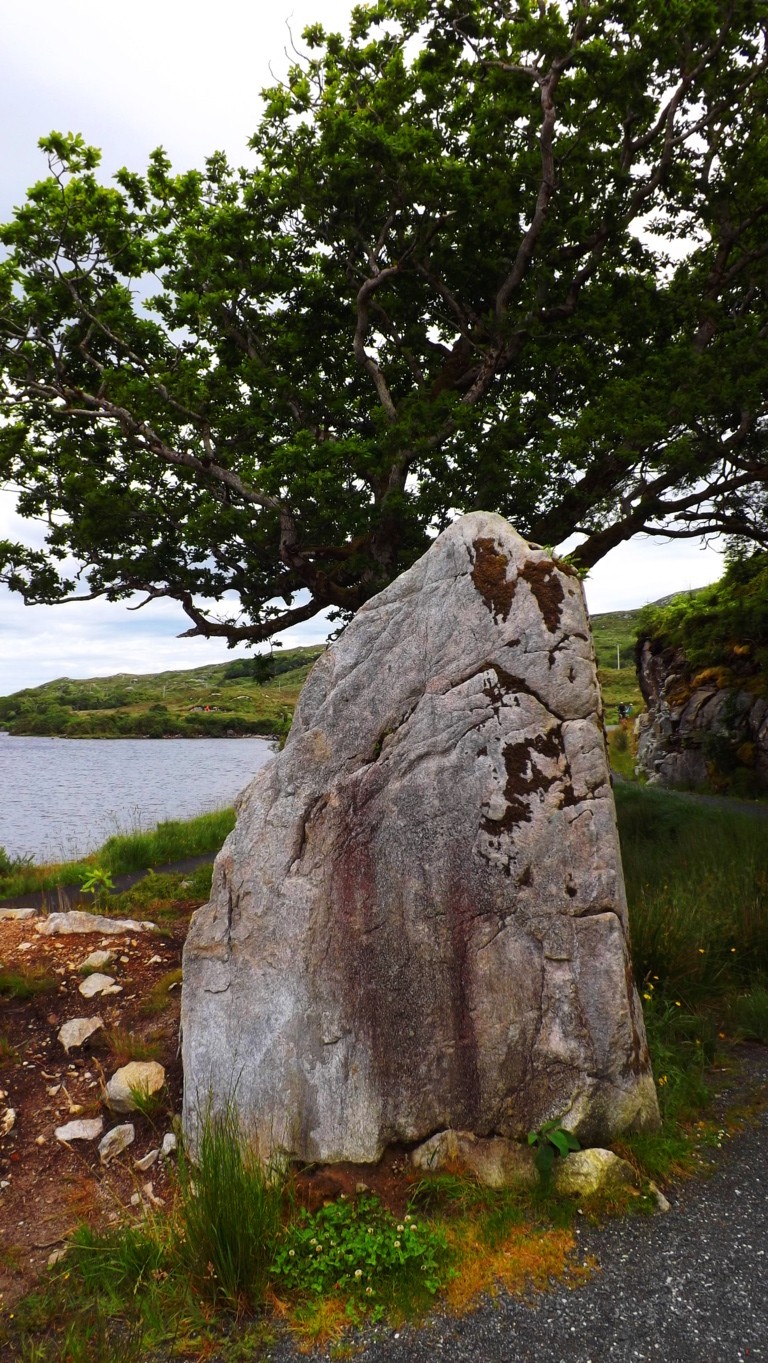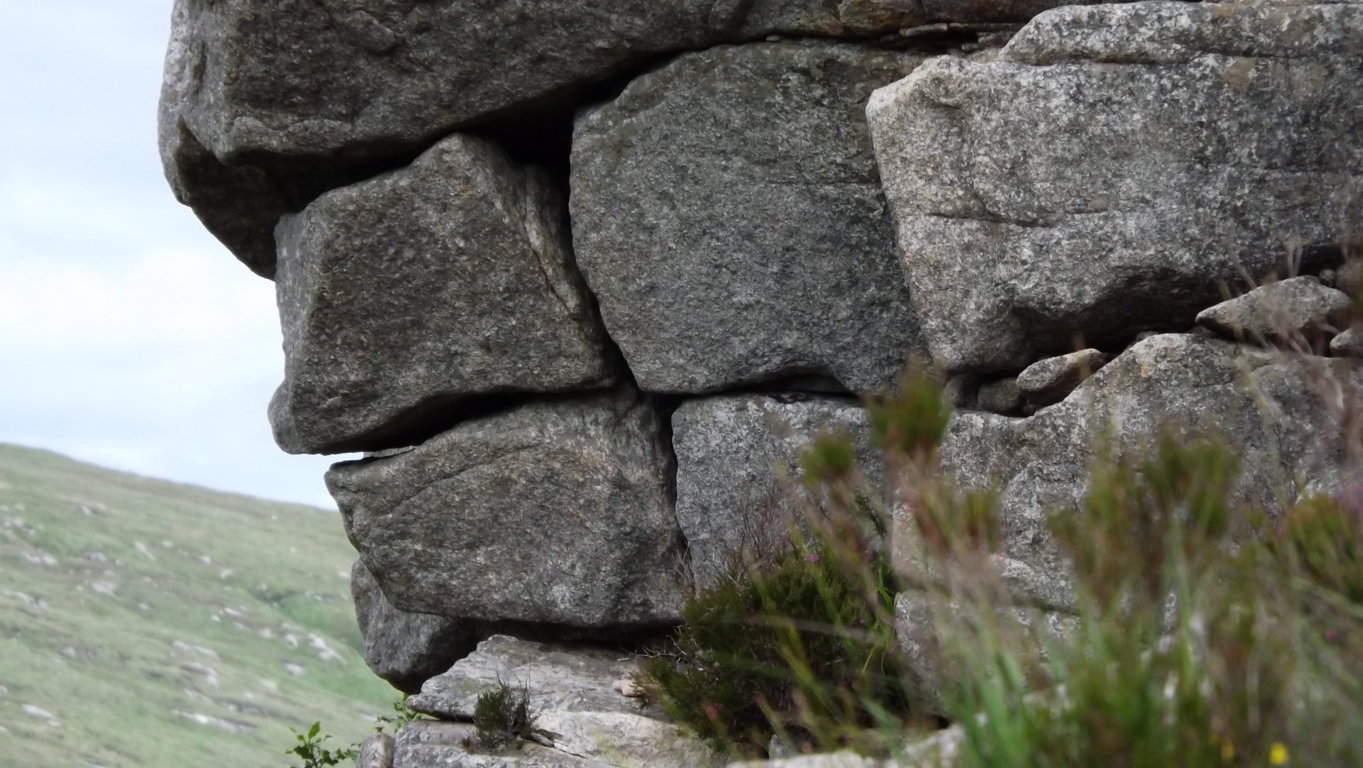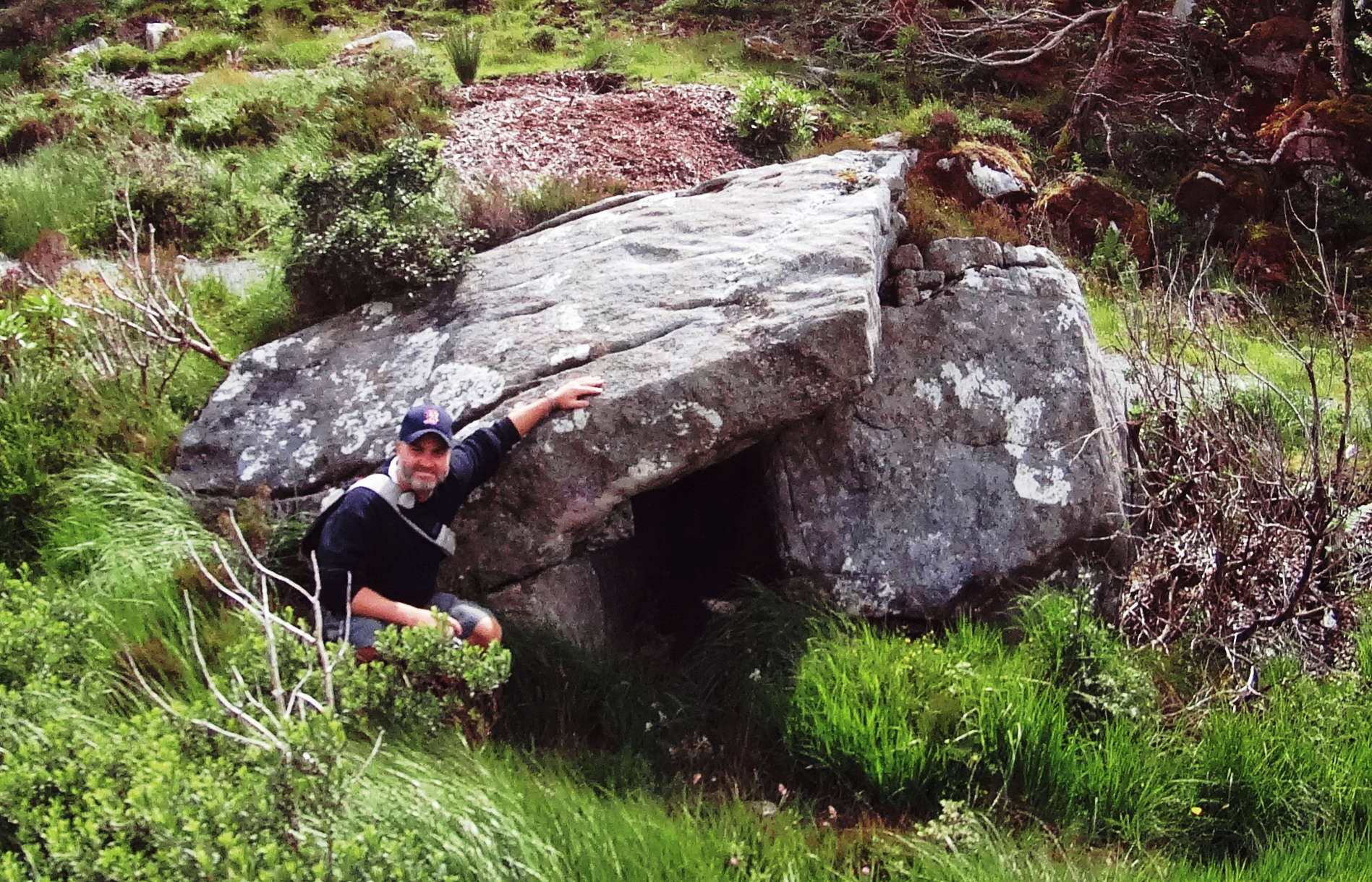Glenveagh National Park
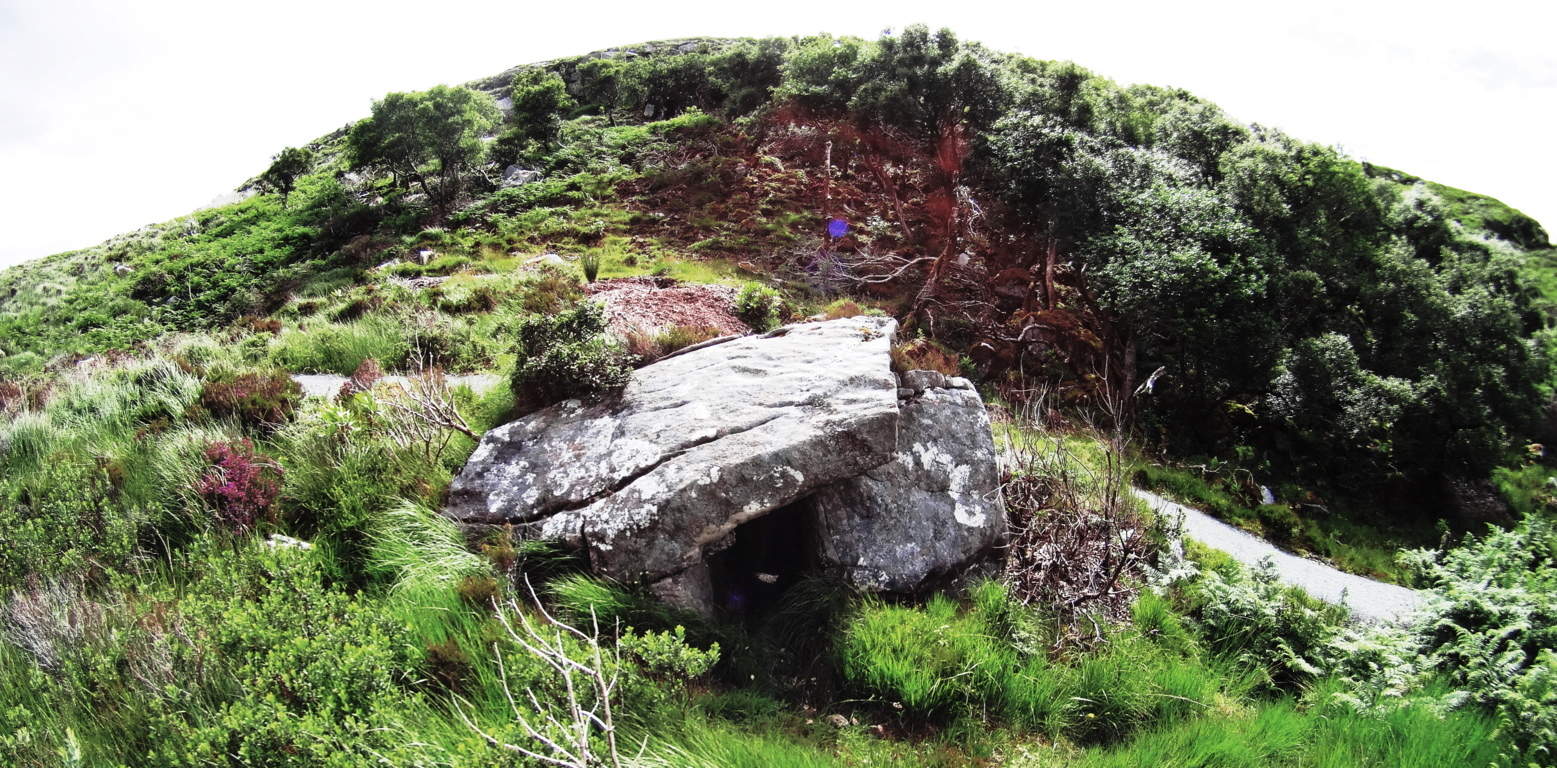 Location: Glenveagh National Park/Donegal/ Ireland
Location: Glenveagh National Park/Donegal/ Ireland
Elevation: 450 feet/Glenveagh Castle, elevated view trail
Scale: Capstone weight 1.5 tons
Note: The Glenveagh Mountains are the classic Celtic range for any trailblazer. Glenveagh Castle sits beside the lake below, supporting trails that run both along the water and above the castle grounds.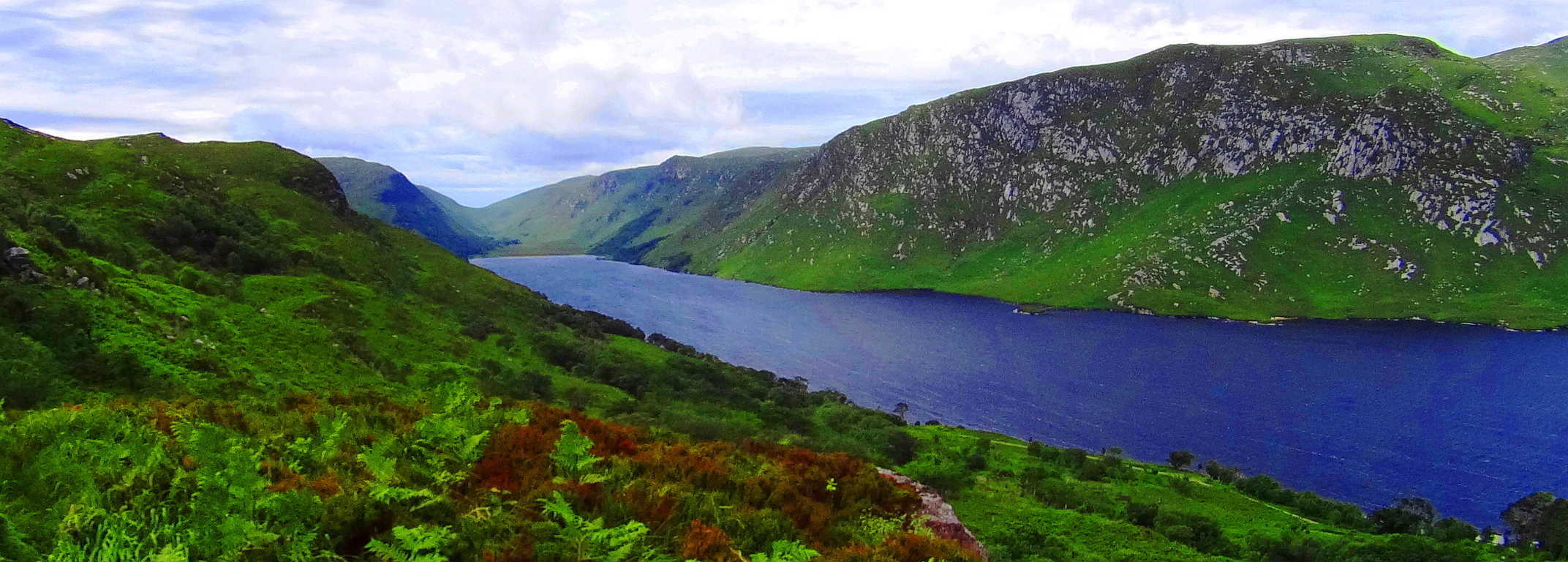 Tucked into the exact center of the elevated gully high above the castle is a small but distinct wedge tomb, complete with a classically slanted capstone and clearly squared entrance way. Many engineered megaliths share the distinct pattern of being located just behind a fantastic peak, out of the wind, most likely where a fire may be concealed from the dangers of the valley beyond; And the valley beyond is truly a site to behold. Another feature that distinguishes arbitrary looking caves from Wedge Tombs is that they are often centrally aligned with the exact mid-line of the mountain facade behind, as you can see from the premier image above. From the top of the mountain looking straight down to the center below is the Wedge Tomb’s location. In terms of the overall space it creates a type of ‘clarity’, rather clutter, to introducing an intrinsic symmetries into the landscape that will comfort those occupy it, and objectify any unaware intruders. Along the Glenveagh Castle Trails there are massive stones that are clearly cut with precision, most likely designating the area as “occupied” by whoever put them there so many thousands of years ago.
Tucked into the exact center of the elevated gully high above the castle is a small but distinct wedge tomb, complete with a classically slanted capstone and clearly squared entrance way. Many engineered megaliths share the distinct pattern of being located just behind a fantastic peak, out of the wind, most likely where a fire may be concealed from the dangers of the valley beyond; And the valley beyond is truly a site to behold. Another feature that distinguishes arbitrary looking caves from Wedge Tombs is that they are often centrally aligned with the exact mid-line of the mountain facade behind, as you can see from the premier image above. From the top of the mountain looking straight down to the center below is the Wedge Tomb’s location. In terms of the overall space it creates a type of ‘clarity’, rather clutter, to introducing an intrinsic symmetries into the landscape that will comfort those occupy it, and objectify any unaware intruders. Along the Glenveagh Castle Trails there are massive stones that are clearly cut with precision, most likely designating the area as “occupied” by whoever put them there so many thousands of years ago.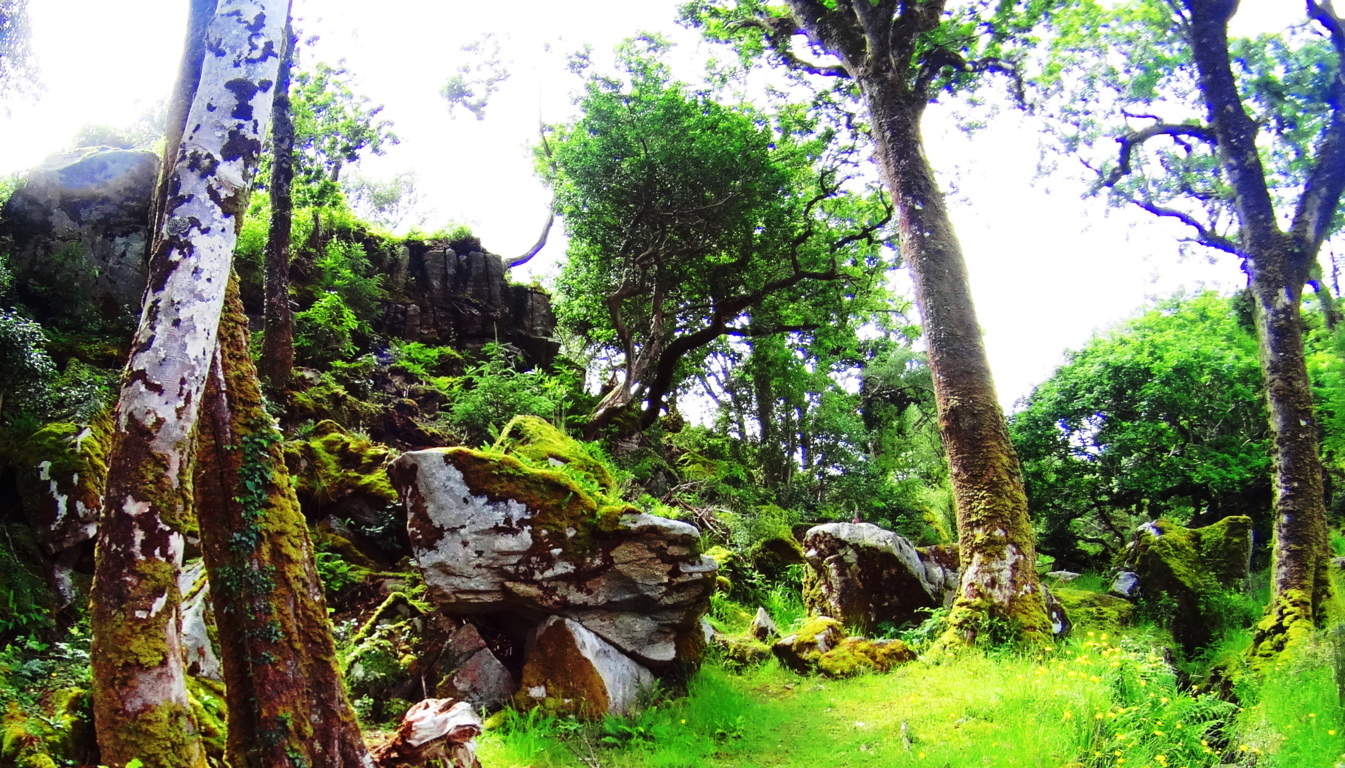 This particular standing stone is cut on one side to create a smooth ‘face’. It stands roughly seven feet high, and 2.5 feet in width, weighing perhaps 3 tons. It is located about a half mile below the Dolmen along a perfectly picturesque waterline. This is also a common theme found in sites from Ireland, England, and America: megaliths placed specifically to call attention to the area as occupied, like corners of a small kingdom. Other clearly engineered works are cut into the cliffs above, complete with right angles and squared free-sitting boulders/slabs. Anthropologists who have taken the time to investigate the patterns of sites where Dolmen are discovered will acknowledge these common themes of strategic location in reference to the Sun, elevated vantages, centrality, and clear ‘signature works’ of stone designating and possessing the area. Those who dismiss the accumulated logic of consistent dynamic evidence with the increasingly crude idea of ‘glacial displacement’ as being responsible for these sacred zones are defending an agenda that limits our understanding of History in general.
This particular standing stone is cut on one side to create a smooth ‘face’. It stands roughly seven feet high, and 2.5 feet in width, weighing perhaps 3 tons. It is located about a half mile below the Dolmen along a perfectly picturesque waterline. This is also a common theme found in sites from Ireland, England, and America: megaliths placed specifically to call attention to the area as occupied, like corners of a small kingdom. Other clearly engineered works are cut into the cliffs above, complete with right angles and squared free-sitting boulders/slabs. Anthropologists who have taken the time to investigate the patterns of sites where Dolmen are discovered will acknowledge these common themes of strategic location in reference to the Sun, elevated vantages, centrality, and clear ‘signature works’ of stone designating and possessing the area. Those who dismiss the accumulated logic of consistent dynamic evidence with the increasingly crude idea of ‘glacial displacement’ as being responsible for these sacred zones are defending an agenda that limits our understanding of History in general. Why is it so hard to even discuss the possibility of a Pre-Native/Pre-Celtic civilization that precedes tribal-human communities? In the Book of Samuel of The Old Testament King David was ordained by God to lead his tribe in battle against the Philistines, who were described as a tribe of giants. The Philistines claimed to be descended from an even more ancient tribe of giants called the Nephilim, referenced in Genesis 6, who were semi-divine, related to angels that fell to Earth and copulated with the first humans in the earliest period of cultural History.
Why is it so hard to even discuss the possibility of a Pre-Native/Pre-Celtic civilization that precedes tribal-human communities? In the Book of Samuel of The Old Testament King David was ordained by God to lead his tribe in battle against the Philistines, who were described as a tribe of giants. The Philistines claimed to be descended from an even more ancient tribe of giants called the Nephilim, referenced in Genesis 6, who were semi-divine, related to angels that fell to Earth and copulated with the first humans in the earliest period of cultural History.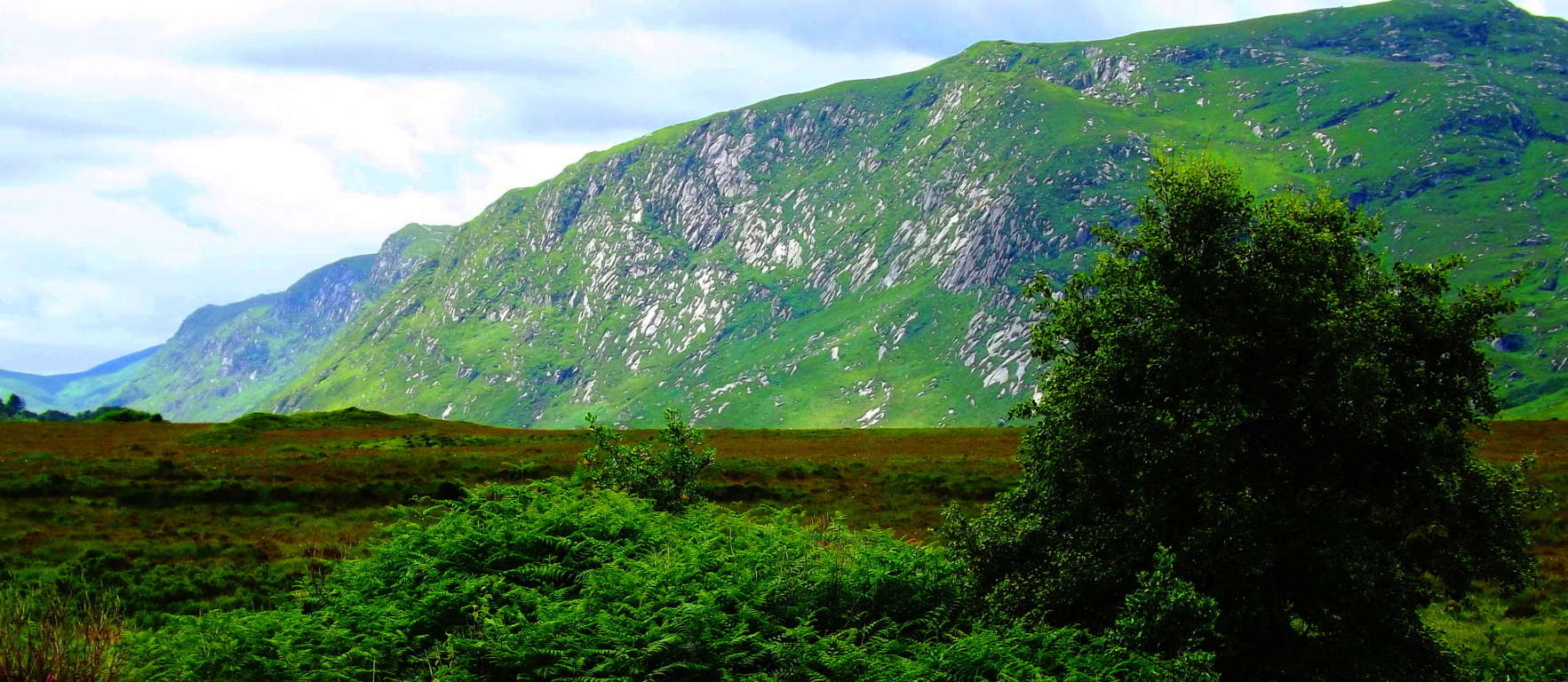 The Mayans did not claim to have built the oldest megalithic sites in South America, but said angels came from the sky and did it before they arrived, and Dolmens can be found outside of Israel to this day. Why is Postmodern culture pushing commercialized popular science as fact when the anthropology tells a very different story? Walk the trails and see for yourself.
The Mayans did not claim to have built the oldest megalithic sites in South America, but said angels came from the sky and did it before they arrived, and Dolmens can be found outside of Israel to this day. Why is Postmodern culture pushing commercialized popular science as fact when the anthropology tells a very different story? Walk the trails and see for yourself.
